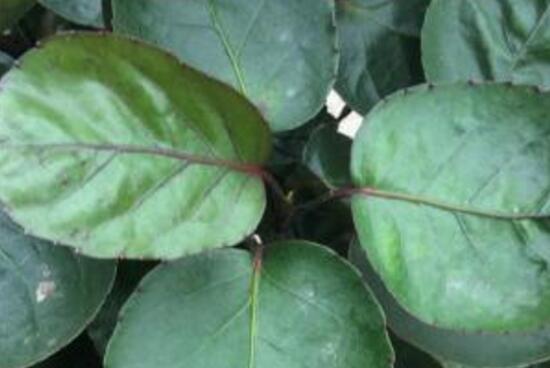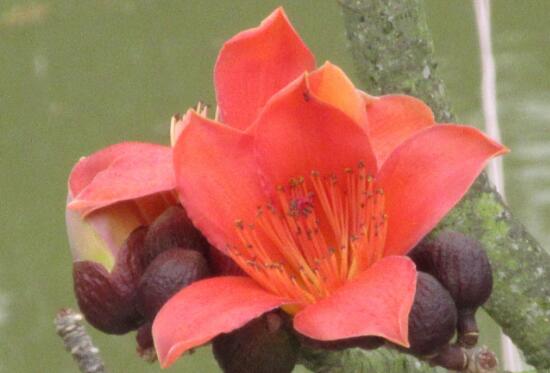How to reproduce the reticulate grass, the graphic method of reticulate grass propagation / cutting is the most commonly used and easy to survive.
One of the reasons why many flower lovers like to raise reticulate grass is that it is very easy to reproduce. It only needs a pot of healthy reticulate grass, cut off a part of its top branches and leaves, insert it into a fertile substrate, and then take root and sprout after a period of time. So how does reticulate grass reproduce? Let's take a look at the diagram of the breeding method of reticulate grass.
How does Rhizoma Rehmanniae reproduce

According to the breeding experience of flower friends and botanists, we come to the conclusion that the main propagation methods of reticulate grass are cutting, ramet and tissue culture, in which tissue culture is generally used to study new varieties, so ordinary flower friends can use the first two methods when planting reticulate grass.
Illustration of propagation methods of Rhizoma reticulata
First, how to cut the grass.
1. Cutting time
Cutting reticulate grass is very easy to breed, even if you don't have it at home, you can pick a few branches from friends, while the time is usually in spring or autumn, as long as the temperature is higher than 15 degrees Celsius.
2. Select branches
As long as it is a healthy growth without withered yellow leaves, it can be used for cutting. Select a branch from the upper part of the plant, cut them with buds and leaves together, and then cut them into about 5 cm each, preferably with 3-5 leaves on top.
3. Insert into the soil
How to propagate the reticulate grass after selecting good branches? Here the editor would like to tell you a skill, that is to soak the branches in carbendazim solution for 5 minutes, it can play a good germicidal effect and make it easier for cuttings to take root. After soaking, take it out and dry it naturally and insert it on the way ready.
4. Maintenance and management
Put the flowerpot in a cool place, you can see some scattered light is the best, to ensure that the soil is moist, and the temperature is 15-20 degrees, generally 2-3 weeks can take root. Do not fertilize immediately after taking root, but wait until it grows small tender leaves, and then apply a small amount of fertilizer, and then maintain according to the breeding method of reticulate grass.
2. Ramet propagation of reticulate grass.
1. Ramet time
In general, the ramet is suitable to be carried out in spring, the time is from March to April, and the ramet will be combined with basin change and pruning at the same time to avoid repeatedly taking out the reticulate grass from the flowerpot and injuring the root.
2. Ramet method
The ramet can be said to be very simple in the diagram of the propagation method of Rhizoma reticulata. The stolons of reticulate grass can easily grow adventitious roots. Cut these stolon bands together to ensure that the length is 10 cm, then pot directly and maintain them in a shady place. After 1-2 weeks, they can survive and transfer to normal maintenance management.
3. Tissue culture and propagation
Although tissue culture is not commonly used for ordinary flower lovers, it is one of the best methods of reproduction. Generally, the leaves and stem tips are used as explants, the leaves are disinfected and cut into segments, and then inoculated on the culture medium. The leaf tiger bends in 30 days, and clusters of buds grow after 20 days. Then the cluster buds are cut and moved into the culture medium, and adventitious roots can grow in 1-2 weeks.
How to reproduce, how to reproduce
How does Rhizoma Rehmanniae reproduce
The propagation method of reticulate grass is usually by means of ramet propagation, cuttage propagation and tissue culture.
The main results are as follows: 1. The method of split propagation of reticulate grass.
For the plants with dense stem and leaf growth, many adventitious roots have grown on the stolon nodes. As long as the stolons are cut off with roots above 10 cm, they can be directly potted and restored in the semi-shade for 1-2 weeks and then transferred to normal maintenance.
2. The method of tissue culture and propagation of reticulate grass.
Leaves and stem tips are often used as explants. After disinfection and sterilization, the leaves were cut into 8mm long and inoculated on MS medium supplemented with 2 mg / L 6-benzylaminoadenine, 2 mg / L naphthylacetic acid and 2 min 4ml D1 mg / 1. After 30 days, the leaves were bent and clustered buds appeared after 20 days. After cutting the tufted buds, they were transferred to 1/2MS medium with 0.1mg / L naphthalene acetic acid, and adventitious roots grew in about 1-2 weeks, and complete plants were formed.
3. The method of cuttage propagation of reticulate grass.
Under the condition of suitable temperature, the grass can be propagated by cutting in the whole year, and the cutting effect is the best when the temperature is slightly higher from May to September. Cut cuttings from the stolons growing out of the basin, about 10 cm long, generally need to have 3-4 stem nodes, remove the lower leaves, slightly dry and insert into the sand bed. If the soil temperature is 24-30 ℃, it can take root 7-14 days after planting. If the temperature is too low, it is difficult for cuttings to take root. Generally, it can be transplanted into the pot 1 month after insertion.
Operation example of propagation method of reticulate grass 1. Cutting substrate
Is used for cutting nutrient soil or river sand, peat soil and other materials. Due to the limited conditions, it is difficult to get the ideal cutting substrate, so it is recommended to use the prepared and sterilized cutting substrate; medium and coarse river sand is also fine, but rinse with clean water several times before use. Do not use sea sand and river sand in saline-alkali areas, they are not suitable for the growth of flowers and plants.
2. Selection of cutting branches.
The branches used for cutting are called cuttings. Cut the stem into 5-8 cm long segments, each with more than three leaf nodes, and the top tip can also be used as cuttings.
3. Temperature after cuttage
The optimum growth temperature is 18 ℃ ~ 30 ℃, avoid cold frost, keep the overwintering temperature above 10 ℃, enter dormancy when the temperature drops below 4 ℃ in winter, and die of frostbite if the ambient temperature is close to 0 ℃. The optimum temperature for rooting of cuttings was 18 ℃ ~ 25 ℃, which was lower than 18 ℃, the rooting of cuttings was difficult and slow, when the temperature was higher than 25 ℃, the cuttings were susceptible to bacterial infection and rot, and the higher the temperature was, the greater the proportion of rot was. When there is a low temperature after cutting, the heat preservation measure is mainly to wrap the flowerpot or container used for cutting with thin film; when the temperature is too high after cutting, the cooling measure is mainly to shade the cuttings, to cover 50-80% of the sun, and at the same time, spray the cuttings 3-5 times a day, with more times of spraying when the temperature is higher in sunny days, lower temperatures and higher temperatures in rainy days, but less or no spraying times.
4. Humidity after cuttage
Like the humid climate, the relative temperature of the air in the growing environment is required to be 60-75%. The relative humidity of the air must be kept at 750.85% after cutting. You can increase the humidity by spraying the cuttings 1-3 times a day, the higher the temperature in sunny days, the more times you spray, and the lower the temperature in cloudy and rainy days, the less or no spraying. But with excessive spraying, cuttings are easy to be infected by bacteria and rot, because many kinds of bacteria exist in the water.
5. Illumination after cuttage
If you are afraid of bright light, you need to keep it in the semi-shade or give it 70% shade. For indoor maintenance, put it in a brightly lit place as far as possible, and move to outdoor semi-shade or shade for a month every one or two months to accumulate nutrients and restore growth. Cutting propagation is inseparable from sunlight, but the stronger the light is, the higher the temperature in the cuttings is, the more exuberant transpiration of cuttings is, and the more water is consumed, which is not conducive to the survival of cuttings. Therefore, the sun must be shaded by 50% to 80% after cutting.
The method of Cuttage Propagation of Rehmannia glutinosa when to sow
Reticulate grass must be no stranger to it, and its popularity in the market is very high at present. Because of its high ornamental value, many people like to buy it. Officially, because of this, there are a lot of people growing it now. Before planting, everyone must be most concerned about its planting technology and time.
The method of Cuttage Propagation of Rehmannia glutinosa
1. The best cutting time is spring and autumn. First of all, we should choose a strong mother plant, not any one can. For the selected reticulate grass, it is best to spread the branches. Then select the branches with terminal buds, about 5 cm in length and 3-5 stem nodes, cut off the leaves of the stem branches inserted into the soil, or cut off half of the leaves to reduce the consumption of nutrients.
2, the prepared branches will be cut in the flowerpot, about 10 centimeters of the flowerpot need to cut 8-10 branches, and then cultivate in a small pot. After cutting, put it in a cool and ventilated place and give it proper light. It can take root in 2-3 weeks. When the leaves gradually recover and grow small tender leaves, apply a small amount of slow-release fertilizer, and carry out proper pruning and coring. If you know enough sunshine and nutrients, you can make the cuttings grow quickly.
3. The growth of reticulate grass needs plenty of sunlight, otherwise, the stems and leaves will easily grow and lose their ornamental value. Once the reticulate grass grows in vain, it is difficult to recover. In addition, the reticulated grass is afraid of cold, the temperature is too low, it is easy to appear the phenomenon of falling leaves. It is not easy to cuttage in Spring and Autumn, so don't catch blind in winter.
When will the grass be sown?
The grass can be sowed all the year round under the suitable temperature, and the sowing effect is the best when the temperature is slightly higher from May to September.
How to plant reticulate grass
1. When selecting flowerpots for planting reticulate grass, we should consciously choose flowerpots with relatively shallow depth, and the bottom of the pot had better be covered with waterproof layer, which can make its drainage performance better. After the flowerpots are ready, we will prepare the soil.
2. The soil can be prepared by ourselves with good drainage performance and sufficient fertility. in order to achieve this effect, we usually mix peat soil, rotten leaf soil and river sand.
3. After preparing these, you can pot the cutting seedlings of reticulate grass. Be careful not to damage the root of reticulated grass when transplanting. It is easy to burn root after touching fertilizer, so avoid fertilizer when transplanting reticulated grass.
4. After planting the reticulate grass into the soil, it should be watered immediately, and the soil should be watered thoroughly, so that the newly transplanted reticulated grass root can be integrated with the new soil, and then normal maintenance can be carried out.
Management of reticulate grass after planting
1. Lighting: reticulated grass prefers medium-intensity light and avoids direct sunlight, but its shade tolerance is also strong. It's best to put it by a bright window indoors.
2. Watering: you must be careful when watering the reticulate grass. If the potted soil is completely dried, the leaves will roll up and fall off. If it is too wet, the stem will rot easily.
3. Fertilization: for plants with exuberant growth, reticulate grass can apply nitrogen-based compound fertilizer with a concentration less than half of the normal concentration every half a month.
4. Temperature: reticulate grass likes warmth, the suitable temperature for growth is 18-25 degrees Celsius, the cold tolerance of reticulated grass is poor, the leaves will suffer cold injury when the air temperature is lower than 12 degrees Celsius, and the plant may die at about 8 degrees Celsius.
5. Diseases: the common diseases of reticulate grass are leaf rot and root rot, the leaf rot is sprayed with 1000 times of carbendazim wettable powder, and the root rot is sterilized by soaking the root with 1000 times of streptomycin.
6. Insect pests: the pests of reticulate grass are harmful to shell insects, red spiders and snails. Shell insects and red spiders are sprayed with 1000 times of omethoate EC, and snails can be caught manually or trapped by snails.
The planting time of reticulate grass can be determined according to the local temperature. When planting, we should first do a good job in the proportion of soil, and then choose the appropriate time to plant. If you want it to grow better, you can choose the method of cutting to propagate, and then strengthen the management.
- Prev

How to propagate money pocket, money pocket cutting method diagram / spring and autumn cuttings rooting in January
Money pocket, a kind of foliage plant that is very popular in Taiwan, Hong Kong and other places, has been very popular in the mainland in recent years and has been kept at home by many people. With the increase in demand, money pockets are multiplied in large numbers, so how do money pockets reproduce? After a large number of experiments by flower friends, cutting is the most practical.
- Next

How to breed kapok, kapok two breeding methods (grafting/sowing)
As a beautiful, effective and strong plant, kapok not only looks good, but also can be used for medicinal treatment. In recent years, as the city flower of Guangzhou, kapok has been more and more well known, and many areas have also cultivated it. Therefore, kapok has been propagated in large quantities. How can kapok reproduce?
Related
- Fuxing push coffee new agricultural production and marketing class: lack of small-scale processing plants
- Jujube rice field leisure farm deep ploughing Yilan for five years to create a space for organic food and play
- Nongyu Farm-A trial of organic papaya for brave women with advanced technology
- Four points for attention in the prevention and control of diseases and insect pests of edible fungi
- How to add nutrient solution to Edible Fungi
- Is there any good way to control edible fungus mites?
- Open Inoculation Technology of Edible Fungi
- Is there any clever way to use fertilizer for edible fungus in winter?
- What agents are used to kill the pathogens of edible fungi in the mushroom shed?
- Rapid drying of Edible Fungi

